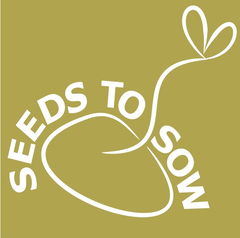Description
This baby marrow variety is perfect to grow in pots, containers or small gardens due to its compact bush habit.
Bush Baby F1 has been specifically bred to produce a smaller marrow (about 3/4 size of standard marrows) and it produces an abundant supply of delicious tasting, dark green with a pale stripe marrows which are quick to ripen.
| When to Sow | April to May indoors or late May to June outdoors. |
| Where to Sow | If sowing indoors fill a 7.5cm (3in) pot with compost, firm down and sow 1 seed per pot 2.5cm (1in) deep. When sowing place the seed on its side (to help prevent dampening off disease). Keep soil moist at all times but do not over water. |
| If sowing outdoors, sow direct into a final growing position, either in a seed bed or in a large pot or container ensuring that each plant is 1m in each direction from its nearest neighbour. Sow each seed sideways 2.5cm (1 in) deep, placing 2 seeds at each station, which can be thinned out later ensuring that the strongest seedling survives. If there is still a risk of frost in your area cover the seeds with a cloche. Keep the soil moist at all times but do not over water. | |
| What to do Next | For seeds which have been sown indoors or in a greenhouse, once the seedling has its first pair of leaves and a third leaf is just appearing, transplant into a larger pot. Harden them of for 7 to 10 days before planting them outside in their final growing position once the risk of frost has passed. |
| For seeds which were planted outside , thin seedlings to one plant per station. | |
| Protect succulent young growth from slugs and snails. | |
| Continue to water regularly, particularly once the plants are in flower and then when the fruits have started to swell. | |
| Harvest | July to October. 12 to 14 weeks after sowing. |
| Handy Tips | Marrows have both male and female flowers, with the female bearing the fruit once it has been pollinated by the pollen from the male flower. To encourage pollination it is advisable to plant 2 to 3 plants (each plant will produce up to 20 fruit) at a time and then leave the rest to the bees. |
| As marrows are heat loving plants, a pot or container in the warmest spot on the patio is one of the best places to grow them and you won't be disappointed with their beautiful yellow flower displays in the height of summer. | |
| The more you pick, the more you will grow! Harvest the marrows by cutting away at the stem with a sharp knife when they are 15 -20cm long. If you do not harvest regularly it will take more energy from the plant and you will not harvest as many marrows. | |
| Fruits that directly touch the soil can rot in wet weather so it is advisable to mulch with straw around the base of the plant. | |
| The leaves of the marrows are susceptible to mildew therefore remove any infected leaves as soon as they appear. | |
| Companion Planting | Calendula (Pot Marigold), Nasturtiums, Radishes, Garlic, Beans and Peas. |
| Nutritional Information | Marrows are very healthy and contain lots of Vitamin B and C as well as Calcium, Iron and Phosphate. |
| Serving Suggestion | Marrows like courgettes are extremely versatile and can be baked, grilled, steamed, stewed, and roasted. They are commonly served stuffed with a variety of fillings involving cheese, minced meat, rice, vegetables and herbs and feature heavily in Mediterranean cuisine. |
Payment & Security
Your payment information is processed securely. We do not store credit card details nor have access to your credit card information.




